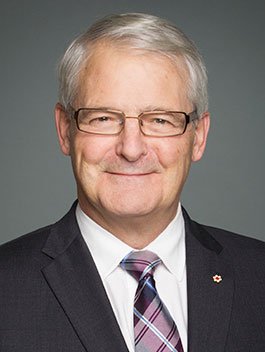Canada’s airports look forward to a seamless collaboration with government, with the news that the Honorable Marc Garneau will be returning to the Transport portfolio.

“Canada’s airports have worked to build a strong, cooperative relationship with Minister Garneau over the last four years,” said Daniel-Robert Gooch, president of the Canadian Airports Council. “Welcome back, Minister Garneau. We look forward to continuing our work with you to improve the prospects for Canada’s aviation sector and our travelers, communities and industry partners.
As locally managed and controlled organizations, Canada’s airports are responsible members of the community, with active strategies for community engagement and sustainability. Fourteen Canadian airports are members of the global Airports Council International (ACI)’s Airports Carbon Accreditation program and pursuing meaningful carbon mitigation and reduction strategies to reduce environmental impact.
Safety and security is always the top priority, and Canada’s airports anticipate working with the federal government on a range of issues. These include a comprehensive plan to ensure Canada has the proper legislative, regulatory and enforcement mechanisms in place to ensure the safe, secure integration of unmanned aerial systems (UAS/”drones”) into our communities and airspace, through adoption of recommendations outlined in the bi-national Blue Ribbon Task Force on UAS Mitigation.
The CAC’s “Seven Point Plan for the Traveler” outlines much of the proactive work the CAC will seek to engage on with government, including work well underway. This includes continued reform and innovation in passenger processing, such as greater use of technology to enhance security and safety. It also includes improving the competitiveness of Canada’s airports as international transit hubs through visa policy reform.
The CAC will work to ensure small airports have access to sufficient infrastructure funding to implement the latest safety, security and accessibility regulations. One important program, the Airports Capital Assistance Program (ACAP) has not seen a funding increase in 20 years, despite inflation in construction and equipment costs. The CAC is working with regional aviation groups from around the country to see this increased.
Meanwhile for larger airports, many seek increased federal investments in public transit and regional ground connectivity overall amidst the strong growth in our cities and air traffic we expect in the coming years.
“The real winners of the work we can do together will be travelers and communities,” Mr. Gooch explained. “Since 1992, locally-managed airport authorities have invested over $27 billion to improve their infrastructure. Canada’s airports are proud to have made these contributions to ensure that Canadians have safe, secure and efficient access to affordable efficient travel and that communities can benefit from the new employment and economic opportunities that our airports provide.”


